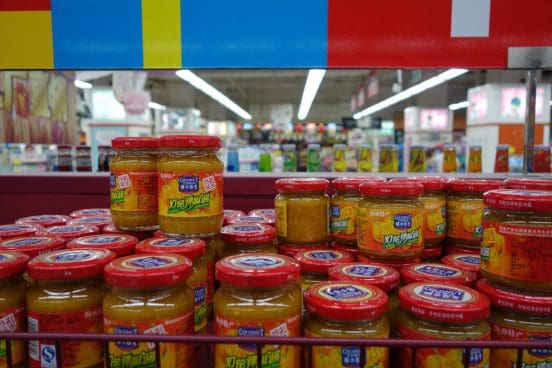The summer of 2013, we already went from Hunan to Hainan. It was just because of family connections to these places, but it was also a chilli-related tour I had wanted to go on.
Hunan, as you may have noticed if you have followed a bit of my writing, is one of *the* places for the chilli in China, and the province I’ve spent the most time in. But Hainan, “China’s Hawaii” as this large island off the south coast of mainland China is often labeled, also has its relation with the chilli, you see.
Hainan is the one place in China that has long – or at least, longer – had habanero.
It seems impossible to find out just how that went, if it is a somewhat older introduction or a more recent one, but it certainly is one that the island has become rather well known for. Not so little marketing is made for and with it, and the yellow habanero sauce from Hainan has become one of the foods/products basically synonymous with the places where they are produced.
In the airport shops selling typical gifts for the traveler to bring back home, it is sold as a matter of course.
The recent sojourn in Beijing, I chanced upon it again; in one of the bigger local supermarkets, it was stocked on the shelves where the international – dare I say, exotic? – products are.

Fancy seeing you here…
What makes habanero in China so particularly interesting to me is the old connection between the two for which an Austrian is responsible.
Nikolaus von Jacquin, in his 1770-1776 Hortus Botanicus Vindobonensis (and in herbarium specimens – I went on the search for those) presented habanero, and christened this species with its botanical name of Capsicum chinense… “drawn from its homeland” as he justified. (If you want to see the relevant pages, I have them on this blog, here.)
He should have known better, as he had himself seen (and probably collected) habanero in the Caribbean, but something got him to associate it with China. This having been the earliest botanical/scientific description of the species, following the then newly invented binomial nomenclature (i.e., the practice of giving species a name based on the name of their genus and an added name describing the particular species, as suggested by Carl von Linné), the label has stuck.
We still use it, but China was certainly not the habanero’s homeland.
In fact, aside from Hainan’s “yellow lantern” (huang denglong) there had not been any other habanero in China. Or so it seemed until the craze for world-record-hot chilli also influenced China and led to the realization that the (then the world’s hottest) “Ghost Chilli” / Naga Jolokia / Bhut Jolokia is also to be found here, on the borderlands with Myanmar and used by an ethnic minority of that area.
That, however, is another story.

Leave a Reply
You must be logged in to post a comment.